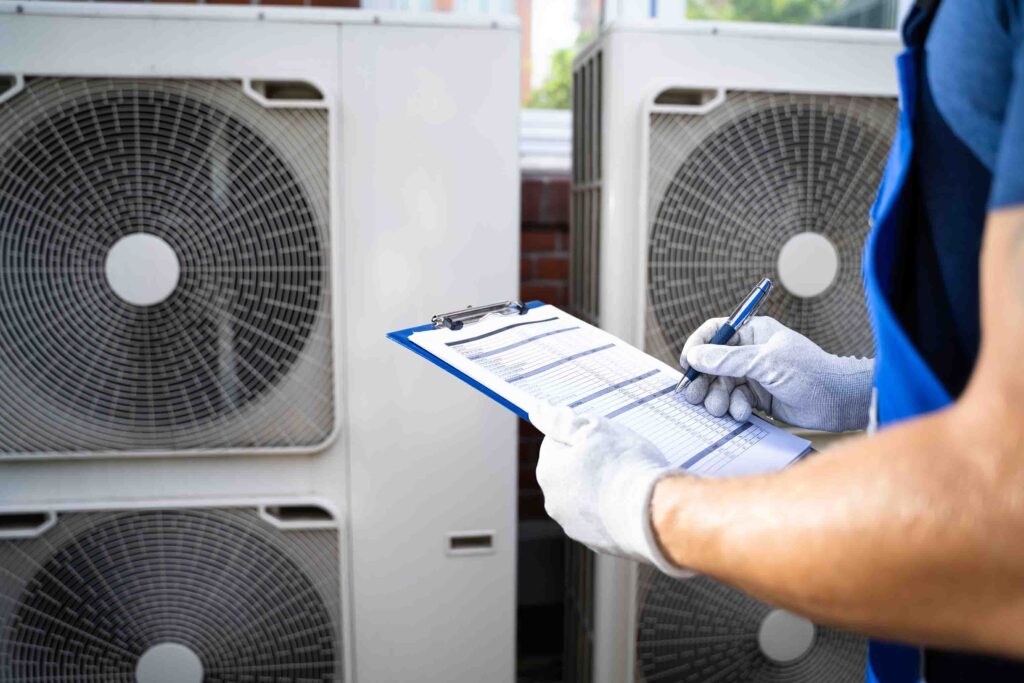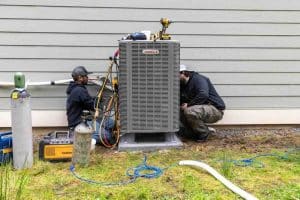Maintaining a comfortable indoor environment is crucial for any home or business, and a well-functioning HVAC (Heating, Ventilation, and Air Conditioning) system is at the heart of achieving this. Regular HVAC maintenance ensures a consistent and pleasant atmosphere and also extends the lifespan of the system, reduces energy consumption, and prevents costly repairs.
We have put together the following HVAC maintenance checklists to help you get a good start on 10 of the most important maintenance tasks, as well as to give you a better understanding of what your system needs to work efficiently through different seasons. Let’s get started!
1. Check & Change Air Filters
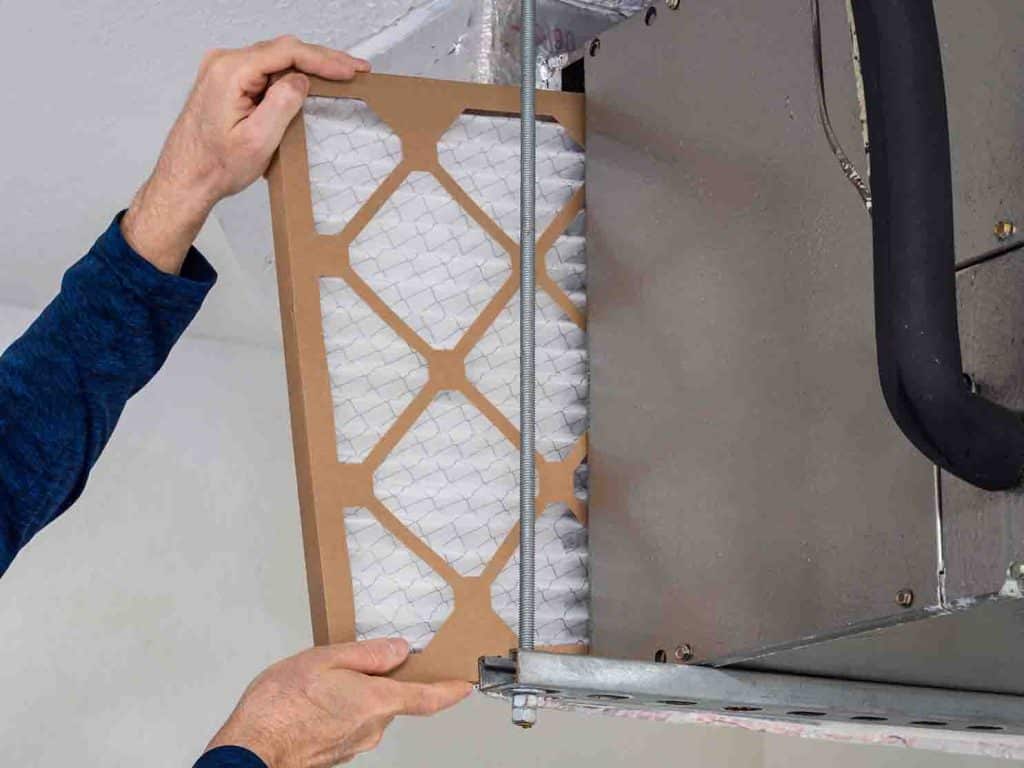
Air filters are the unsung heroes of HVAC systems, responsible for trapping dust, pollen, and other particles, preventing them from circulating in your indoor air. Over time, these filters can become clogged, hindering airflow and forcing the system to work harder. Therefore, it’s essential to regularly check and replace air filters. Consider high-efficiency particulate air (HEPA) filters for superior filtration, especially if there are allergy sufferers in your home.
2. Lubrication Of Moving Parts
HVAC systems consist of various moving parts such as motors, fans, and bearings. Proper lubrication is essential to ensure these components operate smoothly, reducing friction and wear. Regularly inspect and lubricate moving parts to maintain optimal performance. It is also a good idea to use manufacturer-recommended lubricants for specific components to avoid damage.
3. Thermostat Calibration
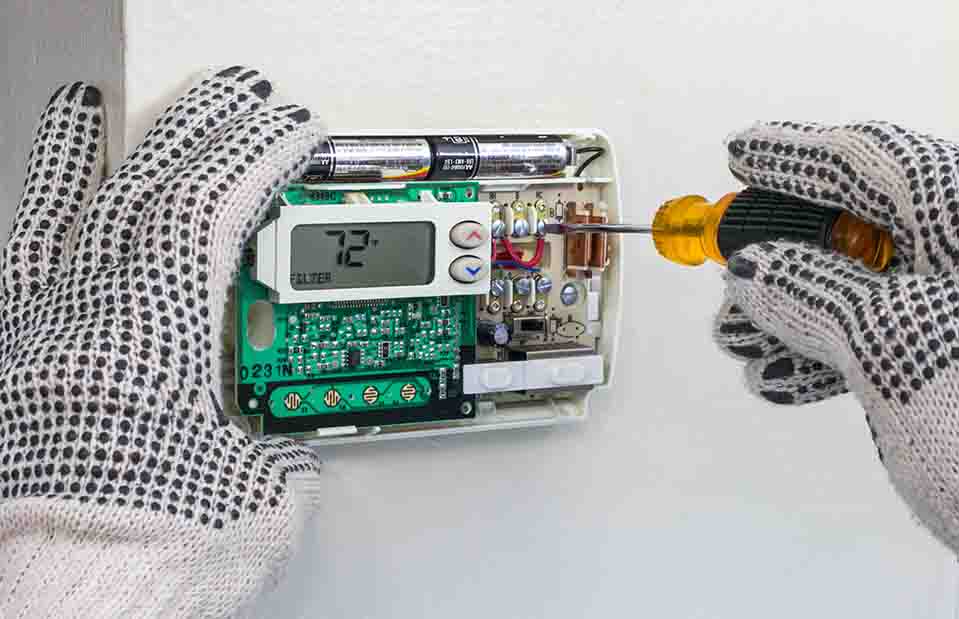
The thermostat serves as the command center for your HVAC system, regulating temperature and ensuring comfort. However, a miscalibrated thermostat can lead to temperature inconsistencies and increased energy consumption. Periodically check the accuracy of your thermostat and recalibrate if necessary. You can also upgrade to a programmable thermostat for more precise control and energy savings.
4. Condensate Drain Cleaning
The condensate drain is responsible for removing moisture produced during the cooling process. Over time, algae, mold, and debris can clog the drain, leading to water damage and humidity issues. Regularly clean the condensate drain to prevent blockages, and add a condensate pan treatment to deter microbial growth in the drain.
5. Ductwork Inspection

Ductwork is the network that delivers conditioned air throughout your home or building. Over time, leaks, gaps, or blockages can occur, reducing efficiency. Schedule regular inspections to identify and address any issues in the ductwork promptly. Remember, the best way to ensure that your ducts and vents can transport air efficiently is to utilize professional duct cleaning to improve indoor air quality and system efficiency.
6. Check Refrigerant Levels
Refrigerant is crucial for the cooling process in air conditioners. Insufficient or excessive refrigerant levels can lead to decreased efficiency and potential system damage. Regularly check refrigerant levels and recharge as needed to maintain the right balance. You can hire a licensed HVAC professional to handle refrigerant-related tasks for safety and compliance.
7. Inspect & Tighten Belts

If your HVAC system has belts, inspect them for wear and tear. Replace any frayed or damaged belts, and ensure that they are properly tensioned. A loose or damaged belt can result in poor system performance and increased energy consumption. This can also lead to more costly repairs, as damaged belts cause your system to work harder, causing many components to become overstressed.
8. Inspect Evaporator & Condenser Coils
Over time, the evaporator and condenser coils can accumulate dirt, reducing their efficiency and ability to cool the air. Regularly inspect and clean these coils to maintain optimal heat exchange. A coil cleaning solution or a soft brush can be used, but ensure the power is turned off before performing any maintenance.
9. Electrical Component Inspection
Electrical components, including wiring and connections, play a vital role in the functioning of an HVAC system. Regularly inspect for loose connections, frayed wires, or signs of electrical issues to prevent system malfunctions and safety hazards. Always turn off power to the system before inspecting or performing any electrical maintenance.
10. Outdoor Unit Maintenance
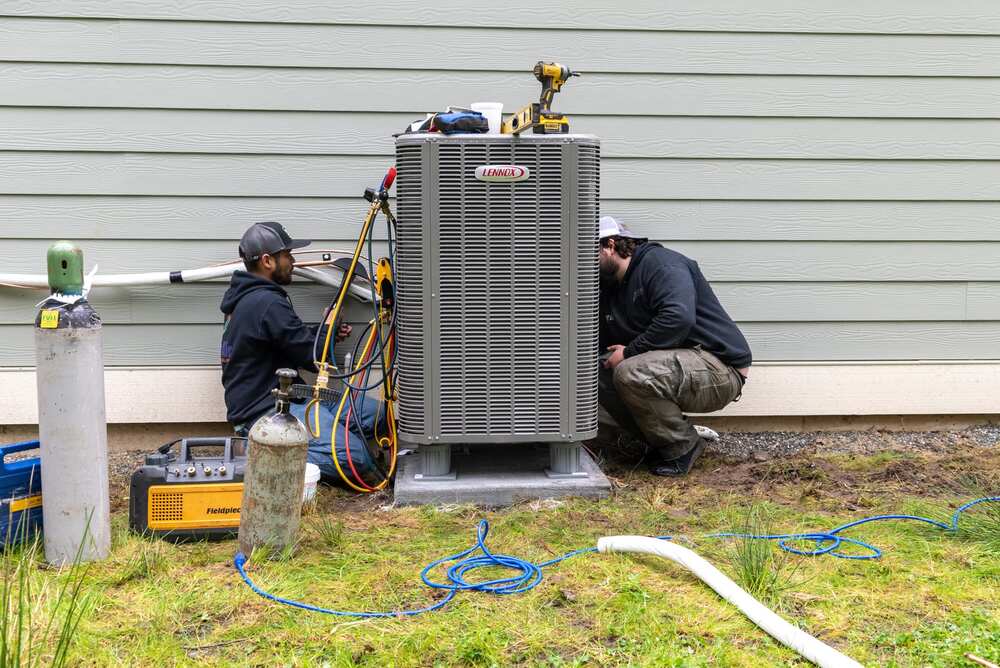
The outdoor unit of your HVAC system is exposed to the elements year-round. Clear debris, leaves, and vegetation from around the unit to ensure proper airflow. Additionally, check for any physical damage to the unit and address it promptly. Consider installing a protective cover during the offseason to shield the unit from harsh weather conditions.
Spring/Summer HVAC Preventive Maintenance Checklist
Any time of year is a great time to check your unit for the issues mentioned above, but there are certain tasks that are especially important when it comes to early spring maintenance. If you have not used your HVAC system for cooling the home down all fall and winter long, the components that are specific to the air conditioning capabilities of the system may be in need of repair. The last thing you want is for your AC to break down in the middle of summer because you neglected to inspect it in spring. Keep the following tasks in mind when the weather starts to warm up and you switch from heating to cooling for your HVAC system:
- Check/replace air filters
- Test thermostats
- Change batteries
- Inspect electrical connections
- Check fan motor
- Check blowers for blockages
- Clean condenser & evaporator coils
- Inspect ducts & vents for mold
- Check refrigerant
- Lubricate all moving parts
- Clean drain lines
- Replace torn & worn belts
Fall/Winter HVAC Preventive Maintenance Checklist
Heating your home requires your HVAC system to work in an entirely different way than it does when it cools your home. This means that different inspections of different components need to be performed before the brisk air of winter tries to creep into your home. Don’t skip these steps if you want to avoid a furnace breakdown this winter:
- Check filters
- Check pulley systems
- Clear drain lines & pans
- Check electrical components
- Examine ignition burner
- Inspect heat exchanger
- Check gas pressure
- Check for gas leaks
- Lubricate moving parts
- Check fan & blower
- Check & clean ducts
- Inspect heat pump (if applicable)
A Professional Approach To HVAC Maintenance
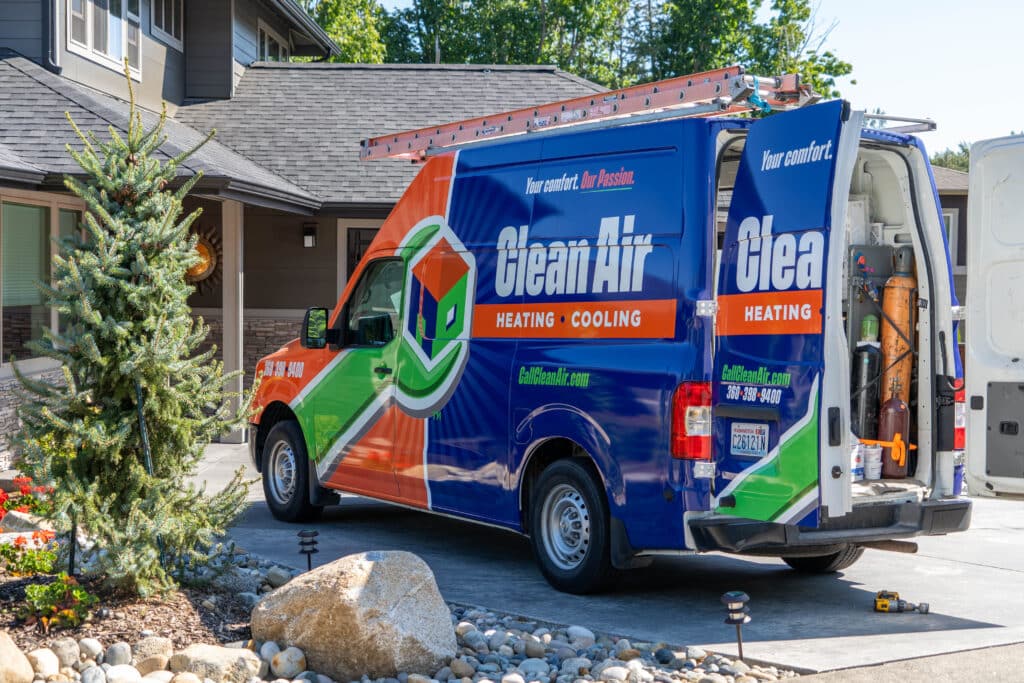
Regular inspections, cleaning, and minor adjustments can go a long way in preventing major issues and costly repairs. Consider creating a schedule for routine maintenance tasks or consulting with a professional HVAC technician for a comprehensive and tailored maintenance plan. Taking a proactive and professional approach to HVAC care is an investment in comfort, energy efficiency, and the longevity of your system!

